

Field Goal Kick Angles
by
Hieu Huy Nguyen
The following is an observational analysis on the angles of field goal kicks based on the distance of the kick and the applications of old NCAA rules versus the new rules. The difference in the rules is the width of the upright being 5 feet narrower in the new rule. The concern here is whether or not the angle is affected dramatically by the change and if whether or not it would be necessary to reduce the angle of the kick by taking 5 yd delay of game penatlies to create a more optimal situation for the kicker.
OLD RULES, UPRIGHT WIDTH = 23.5 feet
Old Field Goal Rules: GSP FILE
We begin by observing the old standard upright width and the maximum angle at the one yard line, 5 yd line, and 10 yd line. The resulting angles are 31.31 degrees, 29.01 degrees, and 26.84 degrees respetively. The three figures below illustrate the varying distances of the kick and how the angle changes as the position of the point of kick increases by 5 yd intervals. The mathematical reasoning behind the increasing angle of the kick is due to the triangle created by the kicker and the upright width as the side length. At the has mark, the kicker's distance to the upright creates a traingle. As all other variables remain constant, the triangles height will vary along with the position of the kicker; therefore, this changes the angle of the triangle at the vertex point of the height.
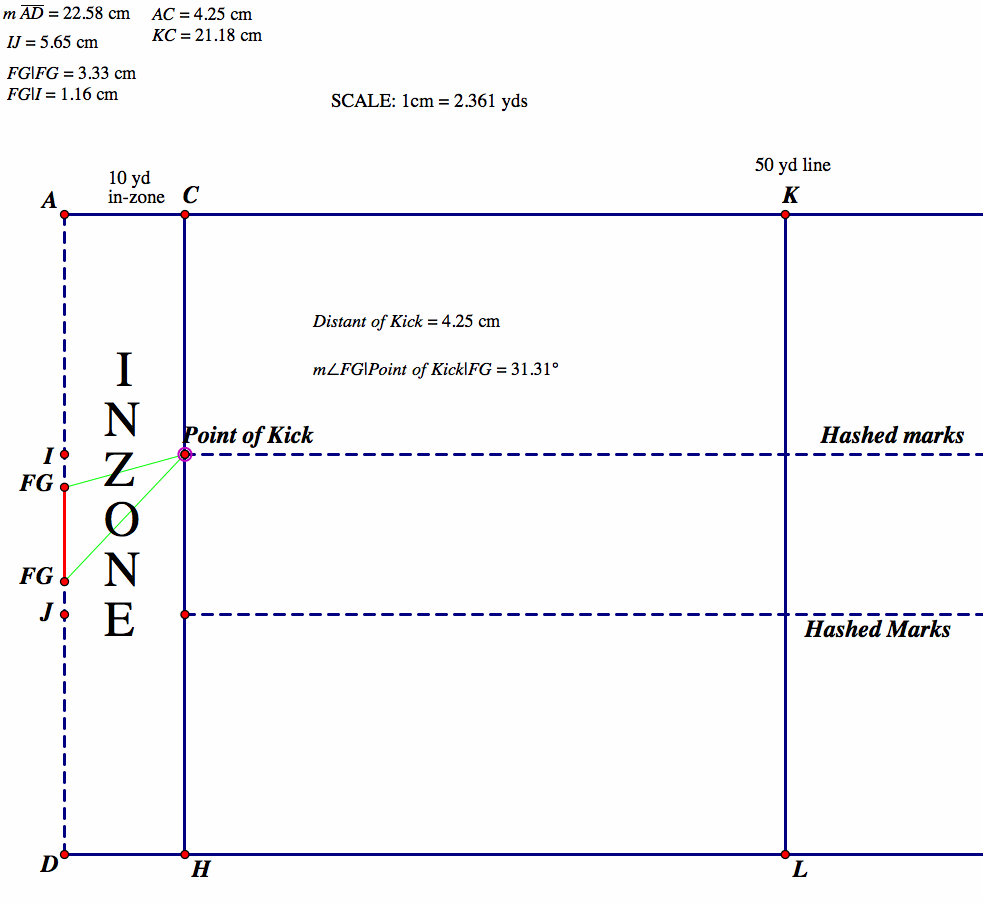
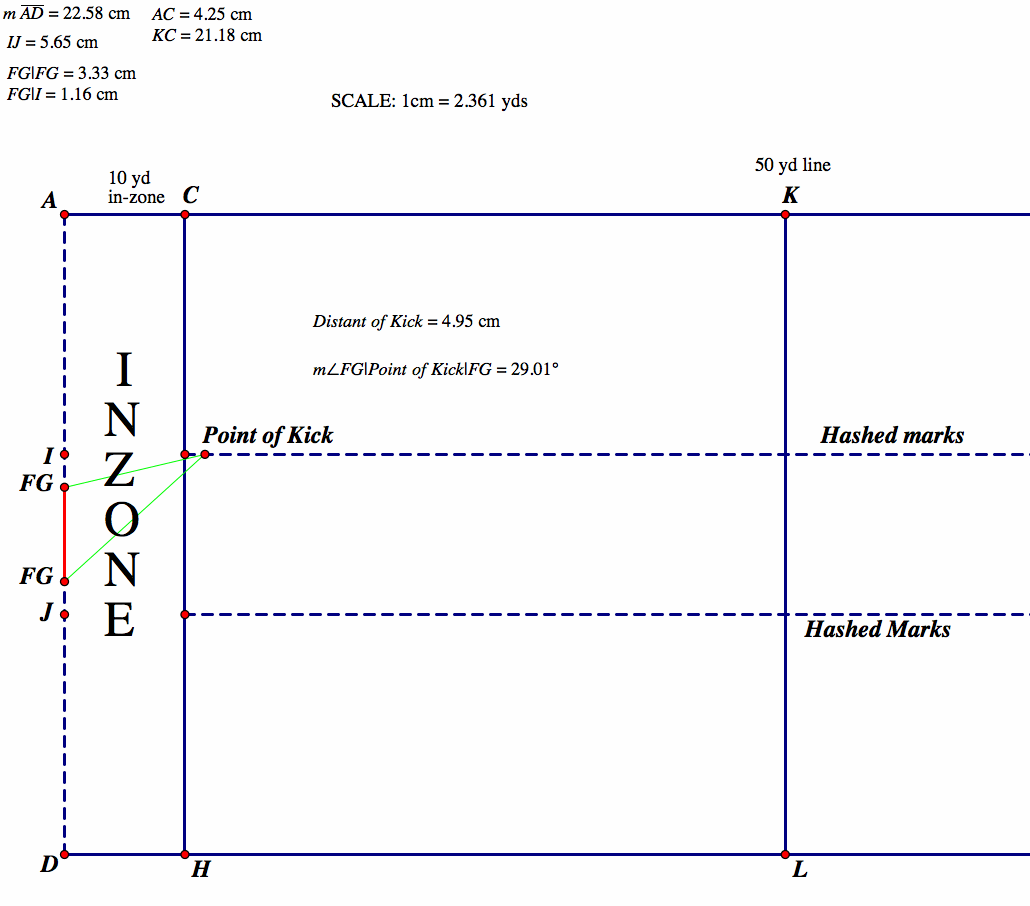
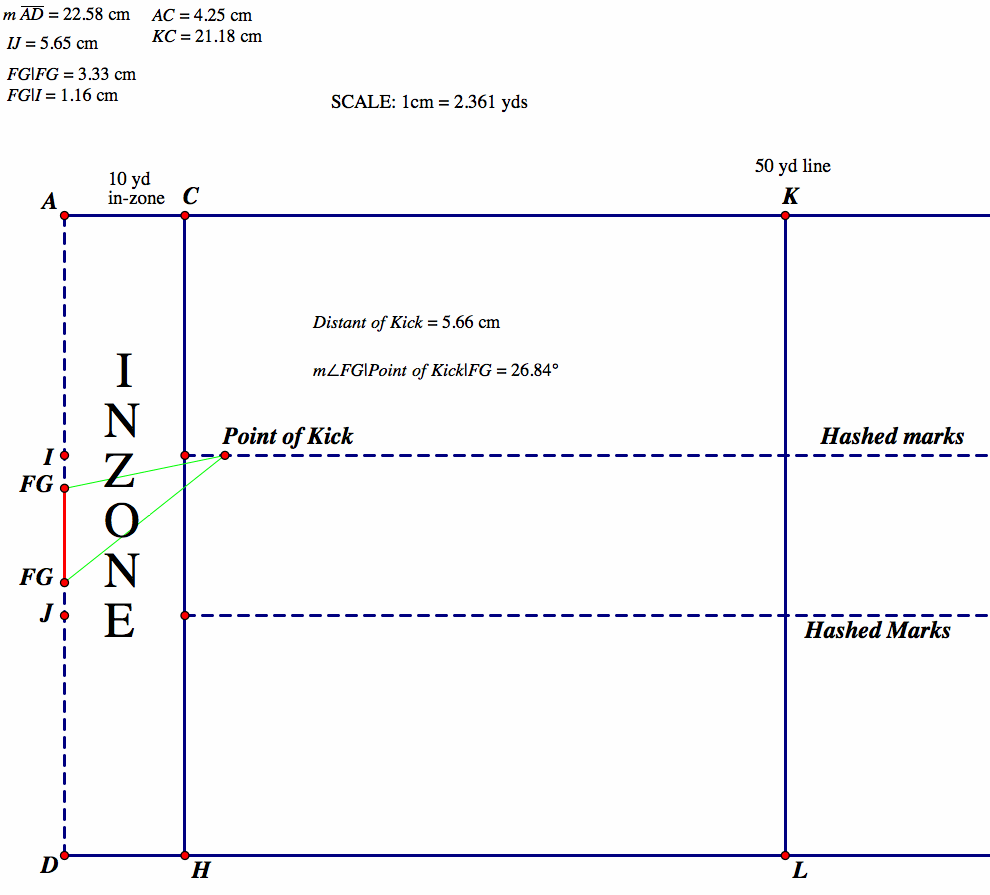
NEW RULES, UPRIGHT WIDTH = 18.5 feet
NEW Field Goal Rules: GSP FILE
We can now observe the new standard for upright width at the 1yd, 5 yd, and 10 yd lines. The resulting angles are 24.64 degrees, 22.88 degrees, and 21.20 degrees respetively. These angles are compared to resulting angles of the old standard, which were 31.31 degrees, 29.01 degrees, and 26.84 degrees respetively. It shows that with 5 feet difference in upright width, the angle for the kick has decreased 5-7 degrees due to the changes in the triangle shape formed by the position of the kicker and the uprights. However, the behavior of the angles are consistent, as the angles continue to increase along with the distance of the kick. This answers the question for most coaches as to whether or not it would be necessary to take a delay of game penalty to increase the angle of the kick. The answer would be YES. Since the new rules has shaved off 5-7 degrees on the angle of the kick, it is optimal to consider any increase in the kicker's angel from the has marks in order to optimize the chances of making the field goal.
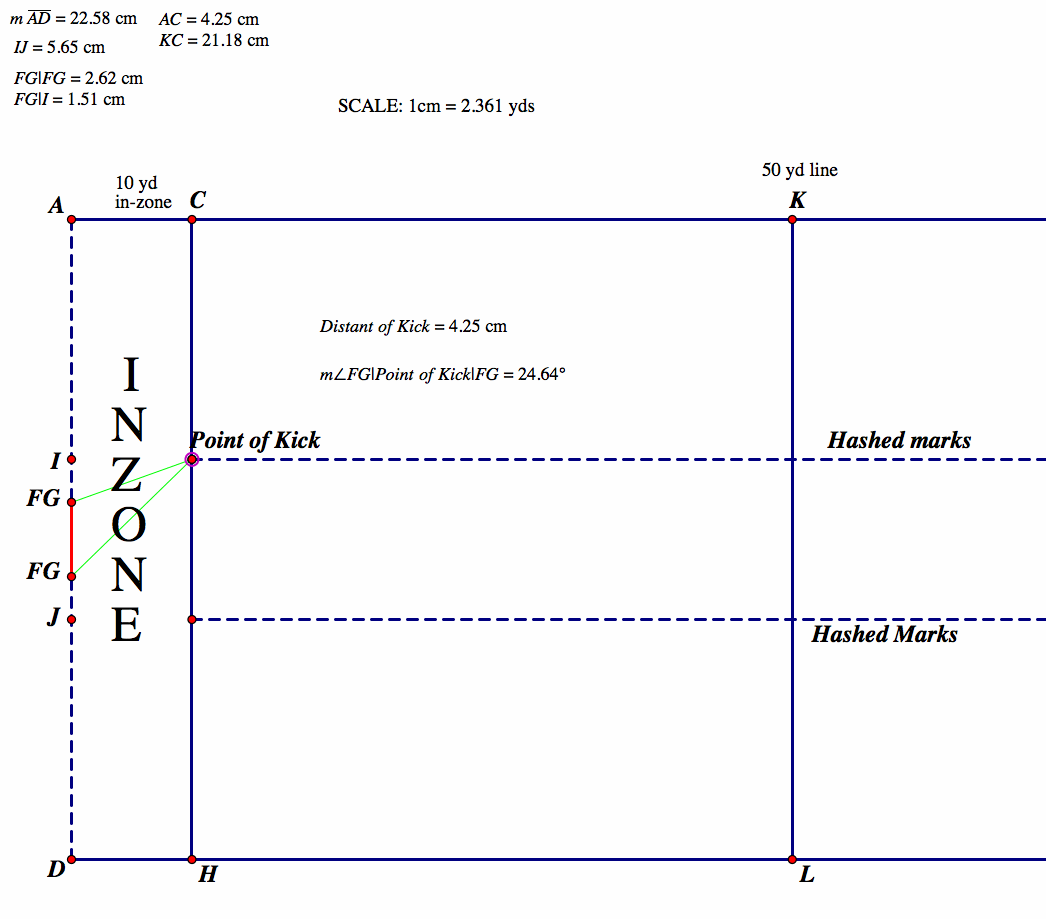
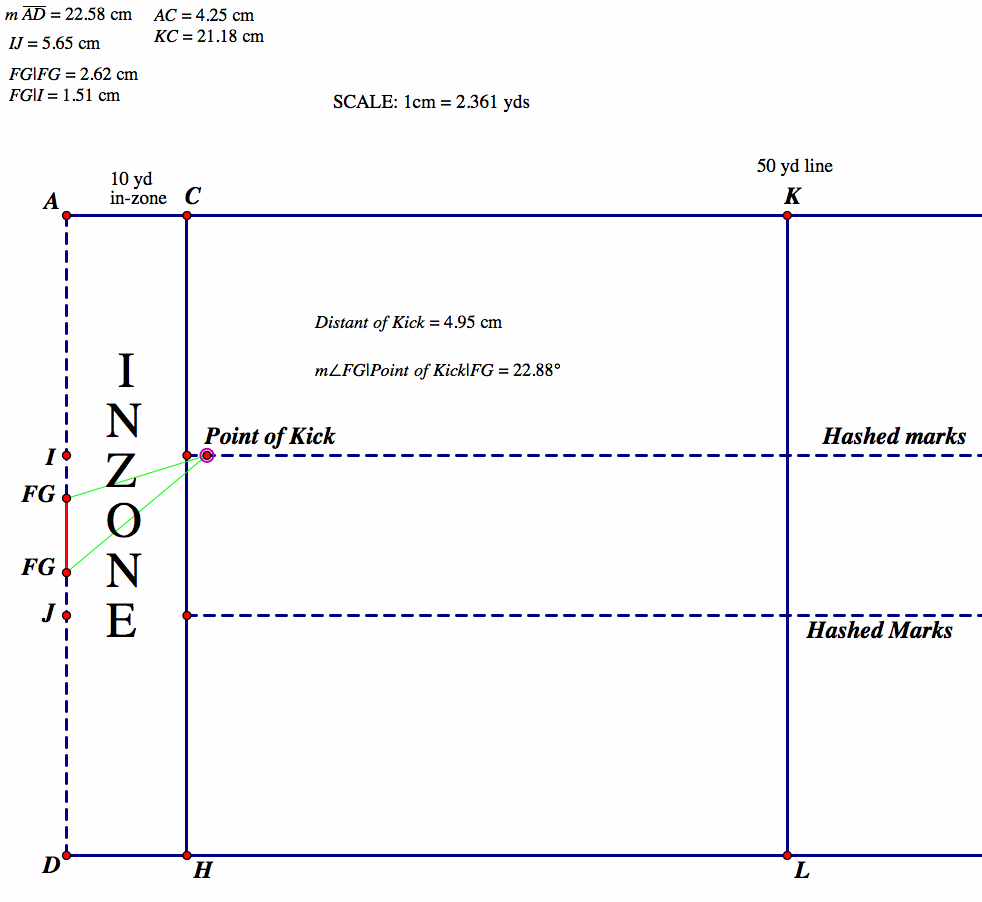
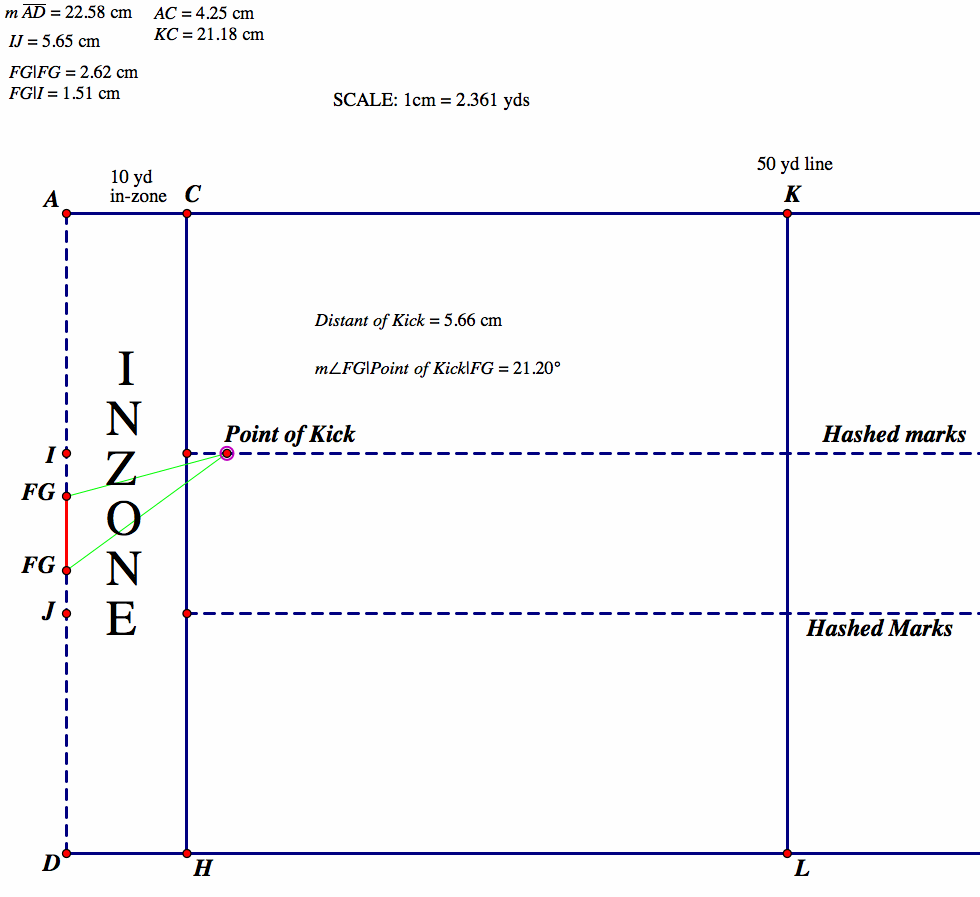
Go back to Hieu's HOME PAGE
Go back to EMAT 6680 HOME PAGE